What even are Capers?… Strange fruit or flower?
I’m here to share everything you need to know about capers. Living in North America they are a kind of unusual ingredient in Recipes. You maybe wondering where do they come from, how do I use them?
What is the point of Capers? Wait aren’t Capers just small Olives? (Spoiler alert No).
When it’s time to cook with capers, you have a thousand options.
These pickled bundles are often used in Mediterranean cuisine, and pack a punch of flavor into things like pasta sauces, salads, and beyond. You can also chop them up or fry them for an added crunch and taste.
Their buds are not the same as olives, but both can be found in classic Mediterranean dishes including Italian dishes.
The salty snack can do more than just make your mouth water though. Capers are packed with health benefits. They offer antioxidants which help keep your body healthy and can reduce inflammation.
If you’re curious to know more about capers like how they taste, what kinds there are, how to grow them yourself or even how to include them in meals the best way for top flavor, look no further!
We’re here to dive deep into the world of capers!.
What are Capers?
Capers are buds that have yet to open. They’re called capers because they come from the caper bush, or Capparis spinosa in Latin.
A perennial shrub belonging to the Capparaceae family, this plant is native to the Mediterranean region and its neighboring areas.
Later on, people began cultivating it for food. The plant also bears caper berries and leaves, which are used in Mediterranean cuisine.
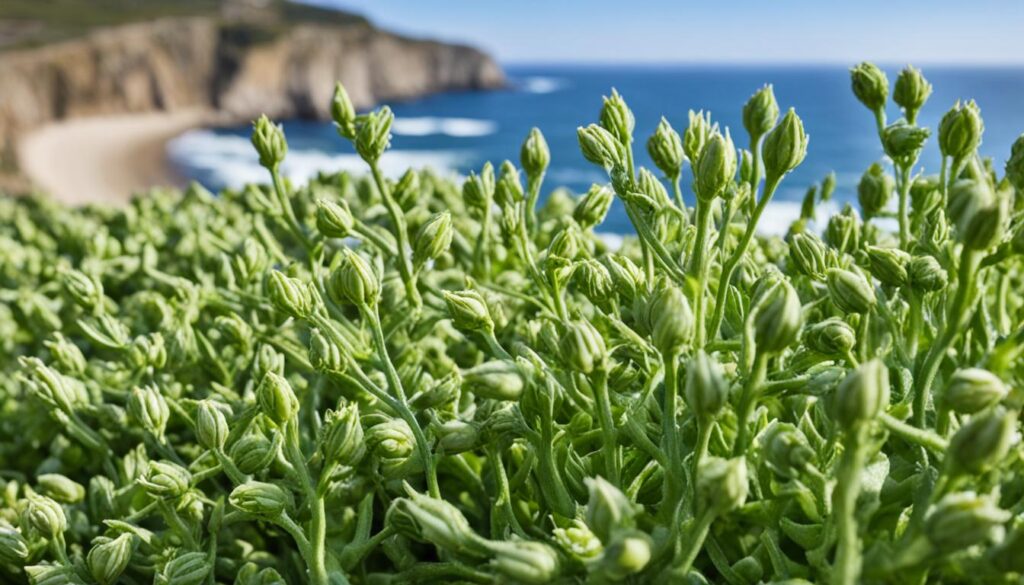
Capers vary in size — there are small ones called non-pareil capers and larger ones known as grusas.
Non-pareil capers are the smallest and most coveted of all. Meanwhile, grusas are the largest ones you’ll find. Caper berries resemble olives much more closely than they do buds.
In addition, caper leaves can be pickled or dried before using them for cooking.
What are capers used for?
You might ask yourself at the grocery store: what are capers used for?
Here’s the thing – don’t worry, they can be useful as either ingredient or garnish. One example is that it is a large part of tartar sauce; another one being the larger Capers can substitute olives as a Martini garnish.
Capers can be sprinkled on top of pasta, seafood, bagels, cream cheese, and lox. They can also be fried until crispy.
In Mediterranean cuisine, capers are often considered an antipasti because they stimulate the appetite. Caper leaves pickled in oil or vinegar can be served with dessert wine and cheese.
What Plant are Capers From?
In case you never did figure it out earlier on, what we’ve been talking about here is a tart seasoning called a caper that’s made from an unopened flower bud of a blooming bush known as the Caparis Spinosa — sounds pretty cool if you ask me!
This particular type of bush is technically referred to as a perennial shrub that belongs to the capparacaea family which is grown mostly in mediterranean regions but can be found elsewhere too like Morocco for example.
Capers enjoy soaking up plenty of sunlight so if you decide you want one of these at home make sure it gets overtime outside!
On top of being able to handle extreme heat levels these plants require very little water throughout their life cycle and grow best in arid soil conditions.

What Do Capers Taste Like?
Capers have a unique taste that is best described as tangy and salty. They have a briny and pungent flavor that adds a punch of acidity to dishes — having a bit of a zing to it when you eat them.
The pickling process they go through is what gives them that pungent taste that some people might not be too fond of but you never know until you try, right?
And I don’t just mean one, if you didn’t like the first time give it another shot and experiment with different foods. The way its seasoned can make all the difference!
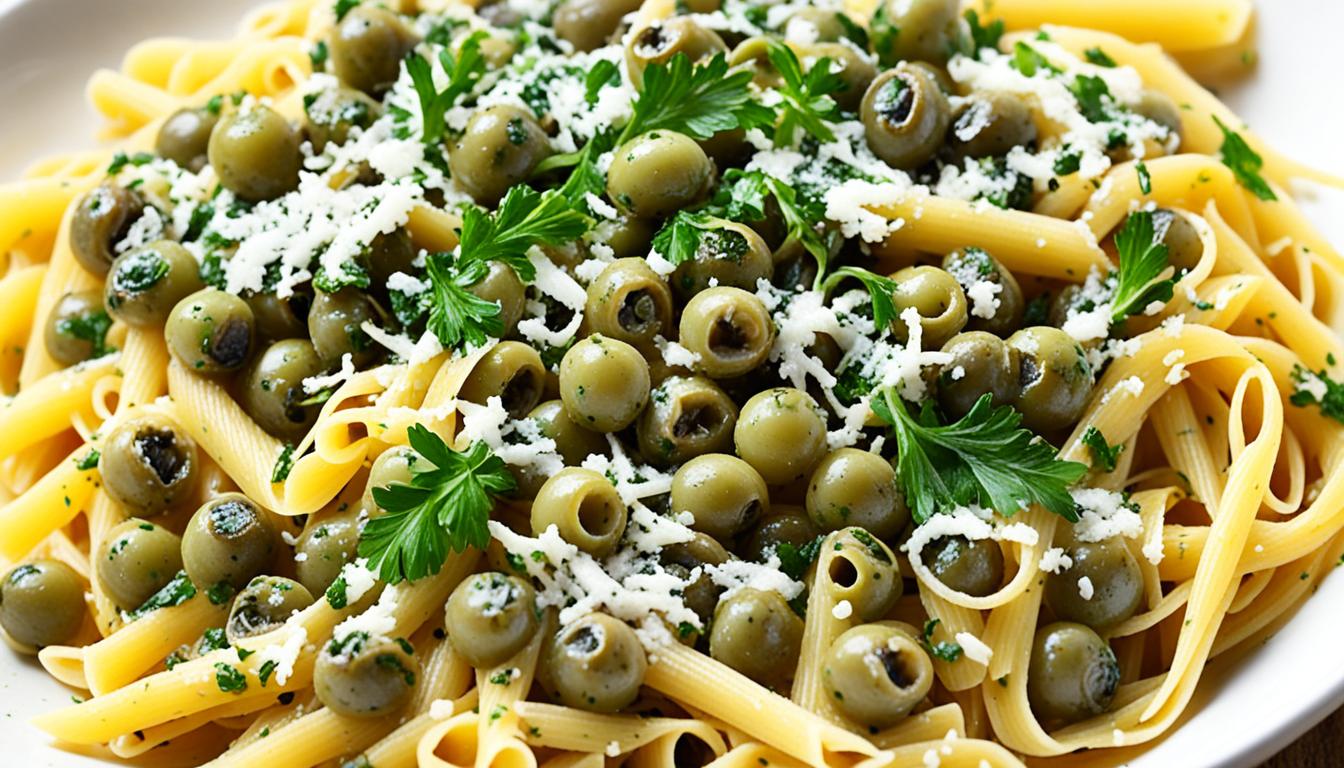
All About Caper Varieties and Sizes
Capers come in different sizes as we mentioned before.
Quite similar to bananas which have different names once hitting a certain size limit such as bite-sized ones being called baby bananas.
Capers follow the exact same pattern! The only difference here is there are six variations depending on how big or small each bud is.
Non-pareil ones are tiny measuring less than 7mm in diameter — these guys tend to be the most popular. Surfines are slightly bigger at around 7-8mm in thickness, while capucines measure 8-9mm.
Capotes span from about 9-11mm, fines range from 11-13mm, and grusas outgrow all others at larger than 14mm diameter.
Size does matter… When it comes to food’s flavor intensity that is! Smaller capers have more kick and concentrated bursts of flavor compared to larger ones. So it just depends on your preference!
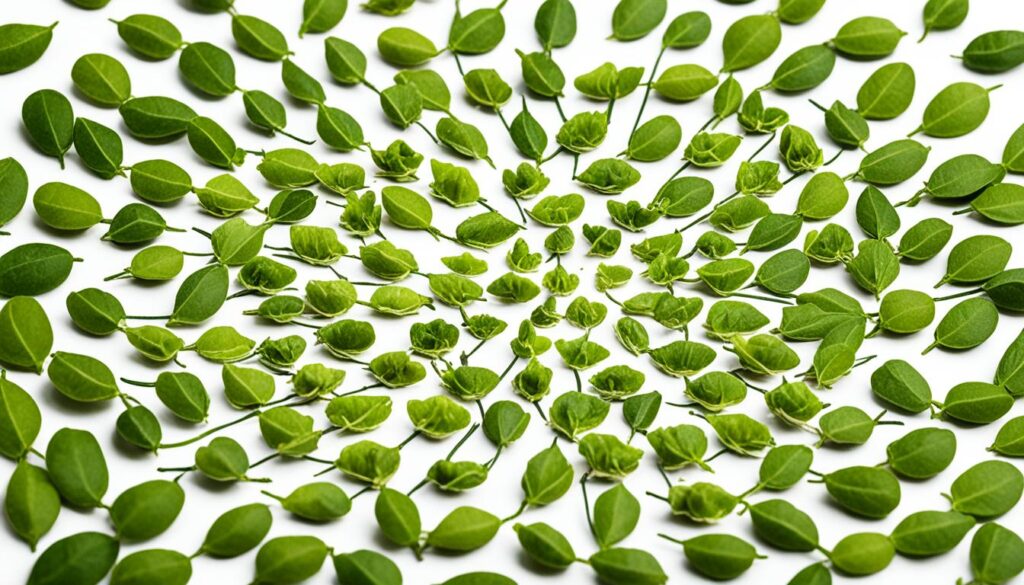
Where Do Capers Grow?
Capers are grown in various Mediterranean regions, such as Pantelleria in Sicily, Morocco, Iraq, and certain Greek Islands. However, they can also be grown at home or in other suitable environments (sunny,warm and dry).
Cultivating Capers: A Guide to Home Growing
To grow capers at home, you need caper plants or fresh seeds. Caper bushes can also be propagated through cuttings.
Choose a sunny location in your garden or balcony because caper plants like direct sunlight throughout the day. If you have limited space you can grow them in pots.

When planting capers, make sure the soil is well-draining and provide good drainage to avoid waterlogging.
Caper bushes prefer poor soil conditions and are known for their ability to grow in arid climates. Water the plants sparingly because they can handle drought and excessive moisture can harm them.
During winter, protect the plants from frost since they’re sensitive to extreme cold.
Thriving in Harsh Environments: The Caper Bush’s Love for Sunlight and Arid Climates
The caper bush is perfectly suited for harsh environments like arid climates and places with hot and dry summers.
It thrives under poor soil conditions and it is resilient enough to survive those without issues. Regardless of where you’re growing capers — whether it’s the Mediterranean or elsewhere — just remember that sunlight plays a crucial role in their growth and productivity.
If done correctly, proper care and cultivation will reward you with plenty of delicious flavor from your homegrown caper bush. Plus, their attractive blooms sure add a splash of beauty to your garden!
Preserving Capers: Salting and Brining Techniques
Picking and Preparing: The Process of Harvesting Capers
In order to preserve capers properly, unopened flower buds should be carefully picked from the plant — giving priority to smaller ones for better flavor.
Once harvested, the capers should be washed and drained so they don’t contain any dirt or impurities.
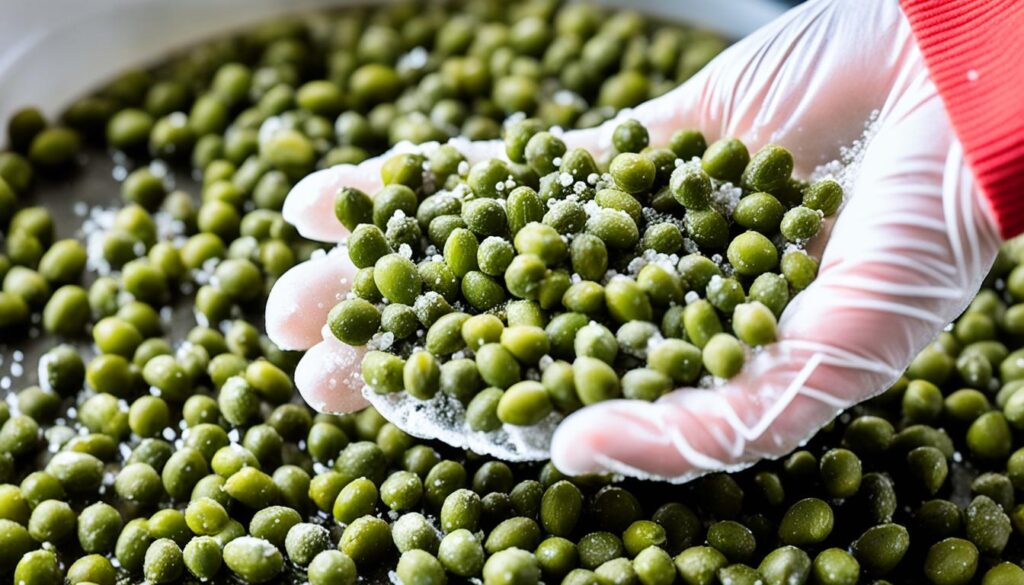
Salting Capers: A Step-by-Step Preservation Method
Salt preservation is a popular technique that many people use to enhance flavor and prolong shelf life.
You start by layering capers with coarse sea salt in a jar, making sure every layer is well-covered with salt. Then the jar must be sealed and stored in a cool place for at least 40 days.
Tip: Make sure to drain the excess liquid that accumulates in the jar periodically, and top up the capers with additional salt to maintain their briny flavor.
Brining Capers: A Simple Preservation Method
If you want an alternative method of preserving capers, brining works just as well.
After rinsing them, let the capers soak in a brine solution made of water and salt for a selected period. When time’s up, pack them into jars while ensuring they’re fully submerged in the brine solution.
Seal everything up and store it all inside your refrigerator, where they’ll remain flavorful for several months on end.
Are Capers the Same as Caperberries?
Capers and Caperberries are actually two different things? Yes, they may sound similar in name and even in appearance, but they are pretty far apart.
Capers are unopened flower buds of the caper bush while caperberries come from the fruit of that same bush. Caperberries have a look more like an olive and are larger than capers.
There’s also a difference in texture between the two. While the caper has no seeds, the caperberry does. Due to this, it is crunchier than its counterpart.
It can be pickled too and used in many recipes but with much milder taste than capers.
The flavor profile of each one is unique so it would not make sense to use them interchangeably in recipes.
They should be treated as individual ingredients with no real similarities to each other except for their looks.
A great example of how unique each one tastes is when comparing them both to olives which share a very similar appearance to the caperberry.
Both olives and caperberries have a distinct olive-like look but that’s about where it ends.
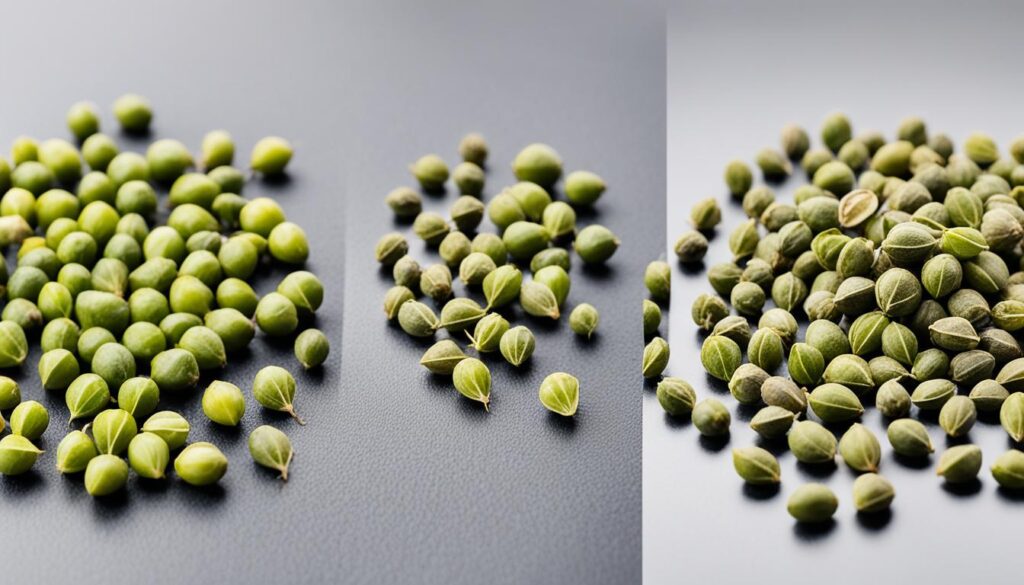
Where are Capers in the Grocery Store?
When you’re ready to buy capers for your culinary adventures, you may find yourself wondering where to look in the grocery store. Don’t worry, I’ve got you covered!
Capers are typically found in the condiment section of most grocery stores.
This is where you’ll find them nestled alongside other pickles and olives. So head to the condiment aisle and keep an eye out for those narrow glass containers that capers are often packaged in.
But what if you don’t see them there?
If you can’t spot the capers in the condiment section, it’s time to venture to the international aisle. Sometimes, certain varieties or brands of capers may be stocked there.
So give the international aisle a browse and see if you have better luck finding the capers you’re looking for.
Still no sign of capers? Don’t fret! The grocery store can be a maze sometimes, and capers may be hiding in an unexpected spot.
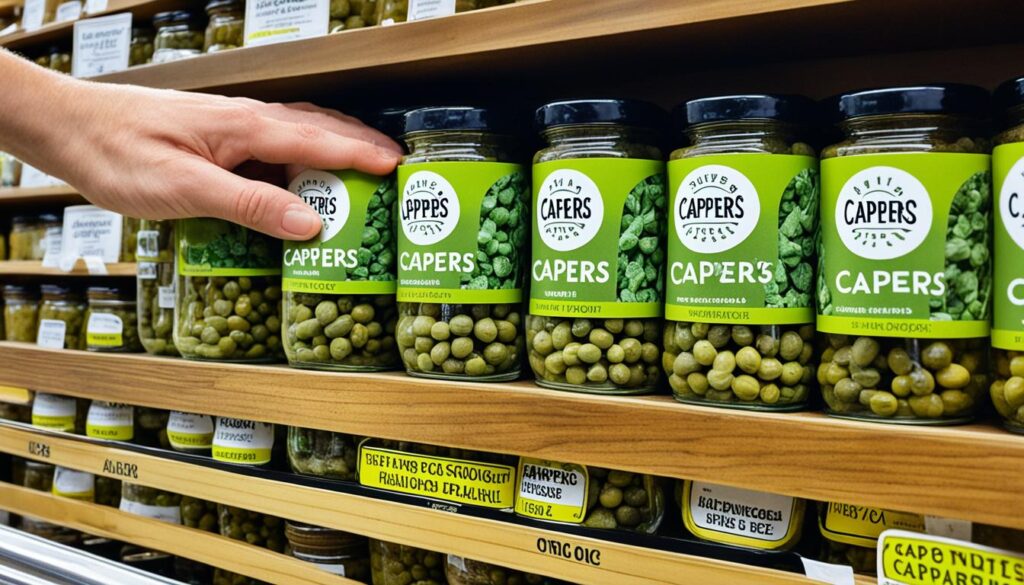
Popular Recipes with Capers
Capers are a versatile ingredient that can be used in a wide range of recipes. They add a tangy and salty flavor to dishes and are especially popular in Mediterranean cuisine.
Some popular recipes that incorporate capers include pasta sauces, salads, and sauces for seafood or chicken dishes. Caper sauce can be used as a topping for fish or grilled meats, while caper pasta dishes offer a flavorful and savory meal option.
Capers can also be used as a topping or garnish for various dishes, adding a burst of flavor and texture. Experimenting with capers in different recipes can help unlock their culinary potential and enhance the overall taste of your dishes.
Here are our top 10 picks of Recipes with Capers:
Lemon chicken
Chicken breasts are pounded till very thin, coated with flour, then fried and served alongside a butter sauce of capers and lemon.
Salmon filet in lemon-caper sauce
Baked or pan-seared salmon fillets that are topped with a creamy sauce made from capers, dill, and finally lemon juice.
Spaghetti alla puttanesca
A spicy pasta dish with tomatoes, garlic, olives and capers on it served over spaghetti or the kind of pasta you prefer.
Capers And Dill Potato Salad
The classic potato salad recipe gets an extra burst of flavor from capers and dill in this tangy version with boiled potatoes dressed in mayonnaise or yogurt.
Caper Bruschetta
Slices of baguette that have been toasted until they become golden brown then topped off using chopped tomatoes mixed together with capers among other ingredients like basil leaves, olive oil to complete a perfect taste for garlic which is then toasted.
Eggplant And Caponata
A sweet and sour Sicilian relish prepared using eggplants, tomatoes, onions olives and capers.
Tuna With Caper And Olive Sandwiches
Crusty bread filled with canned tuna fish flavored by mayonnaise alongside chopped up olives as well as some other ingredients such as capers to give Mediterranean taste.
Lemon Butter Sauce With Capers
This sauce has many uses but is particularly good when drizzled on fish or poured over chicken or vegetables; it contains butter along with lemon juice and caper berries.
Capers Tapenade
A spread made by crushing up cloves of garlic plus olive oil along with anchovies followed by olives as well as drained caper berries which makes excellent crackers or condiments to be served beside them.
Lamb Chops Coated In A Crust Of Capers And Herbs
The lamb chops were dipped in breadcrumbs comprising capote, rosemary and parsley before being roasted or grilled.

Capers vs Olives: Understanding the Differences
You know how some things are just bursting with flavor? Like those moments when you put something in your mouth and it’s like getting hit by a tidal wave of taste?
Well, capers are one of those things. They’re tangy, salty, acidic, and pungent. They scream flavor at the top of their lungs. But they do have this burst of brightness that can really give a dish some life.
Olives add a different kind of richness to dishes. They don’t explode with flavor like capers do, but instead bring in hints of bitterness along with their savory taste.
You’ve probably tasted them before on pizza or in salads — they’re great for adding a meaty element without actually needing meat.
Comparing Flavors: The Unique Taste Profiles of Capers and Olives
Capers and olives have a similar briney taste, but they offer unique flavor profiles and add different dimensions to dishes.
Capers give off a tangy and salty taste, which brings brightness to a dish. Olives on the other hand give off a rich, savory flavor. They work well in salads, pizzas and on their own as a snack.
Once you know the differences between capers and olives you can begin implementing them into all your recipes.
Application in Dishes: When to Use Capers and When to Use Olives
The flavor of capers can be enhanced by using them in pasta sauces, salads, and various Mediterranean dishes.
Their saltiness and tanginess bring out the best in other ingredients and gives the dish an overall rich taste.
If you decide to add olives into your next recipe, these savory fruits can be a standalone ingredient in salads, pizzas, and as a snack.
They give off that mouth-watering umami taste that many people love when they bite into it.
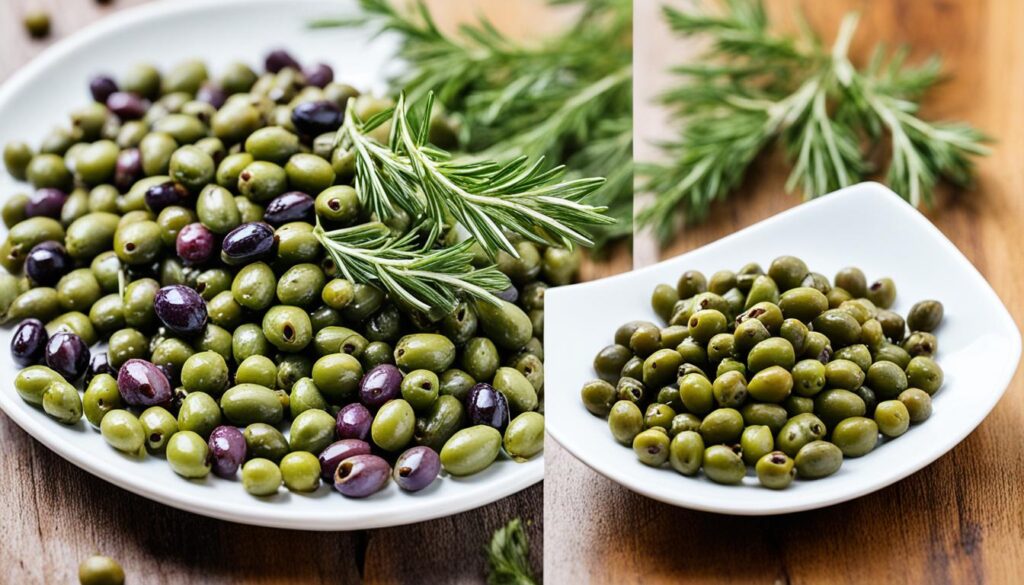
In summary, capers and olives may share a briney taste, but they have unique flavor profiles and culinary uses.
The Health Benefits of Capers
While I think Capers are absolutely delicious, capers also offer some health benefits as well! They contain antioxidants which protect against chronic diseases by reducing oxidative stress.
Moreover, capers contain flavonoids which have anti-inflammatory properties and may help reduce inflammation in the body.
In addition to this they are low in fat meaning their caloric content is quite low too giving them a healthy edge on other condiments.
Lastly they do have vitamin K, calcium, and iron within them so incorporating more capers into your diet could support overall health.
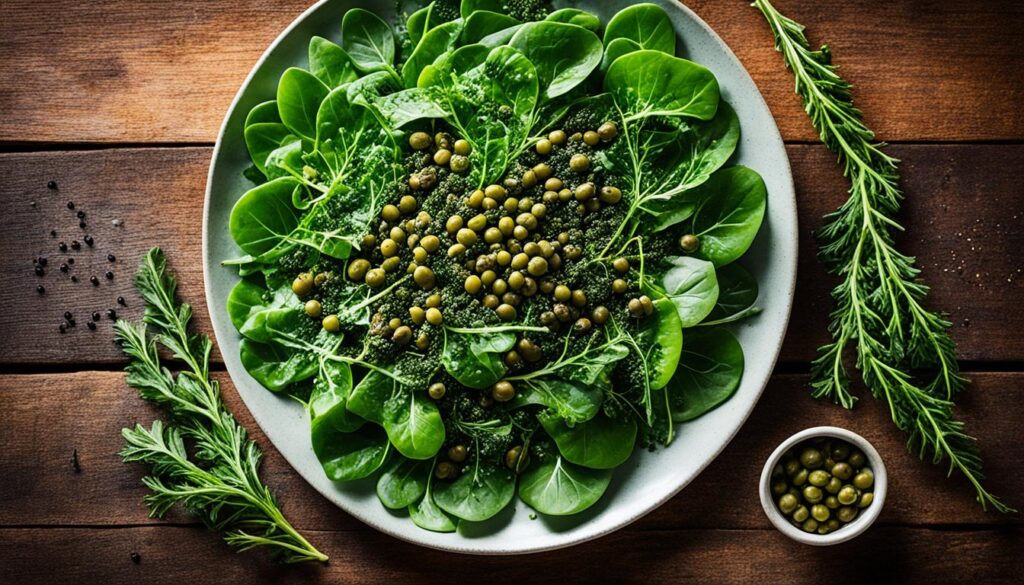
FAQ
What are Capers?
Capers are the edible flower buds of the caper bush, scientifically known as Capparis spinosa.
They are small green buds that are picked and pickled before they have a chance to bloom into flowers. Capers have a tangy and salty flavor and are commonly used in Mediterranean cuisine.
What plant are Capers from?
Capers are harvested from the caper bush, scientifically known as Capparis spinosa.
The caper bush is a perennial shrub that belongs to the Capparaceae family. It is native to the Mediterranean region and is widely cultivated for its edible buds. The caper bush also produces caper berries and leaves, which are used in Mediterranean cuisine.
What do Capers taste like?
Capers have a tangy and salty flavor. They have a briny and pungent taste that adds a punch of acidity to dishes. Capers have a distinctively savory and slightly lemony quality that pairs well with a variety of ingredients.
What are the different varieties and sizes of Capers?
Capers come in lots of sizes and are sorted into varieties based on size alone. The most common ones you’ll find include non-pareil capers, surfines capers, capucines capers, capotes capers, fines capers, and grusas capers (the biggest variety is grusas).
Where do Capers grow?
Capers first appeared in regions along the Mediterranean Sea long ago.
People continue growing them in these places today; Sicily, Morocco, Iraq, Greece and other Greek islands all produce a lot of this plant.
In theory you could try growing them at home or anywhere else with a similar climate — just give them plenty of sunlight and they should be able to survive.
How can I preserve Capers?
There are two main ways to preserve freshly picked Capers: either salted or brined.
Salted caper preservation involves putting the buds directly into jars and layering them with coarse sea salt. Store the jars in cool places for up to forty days before opening them up again.
To brine caper buds instead soak them in water + salt solutions before packing damp buds into jars full of vinegar or another acidic liquid (wine is common).
With both methods the preserved buds will last for several months if stored properly in refrigerators.
Are Capers the same as Caperberries?
Technically no! Real Capers are unopened flower buds from the same bush that grows Caperberries (the plant’s fruit). Caperberries look like big olives compared to regular sized herbal Capers.
Where can I find Capers in the grocery store?
Most grocery stores put Capers in the same section as other olive products and pickles. If the store you’re at doesn’t have them there, be sure to check the international aisle before giving up on finding them entirely.
What are some popular recipes with Capers?
Capers are a very versatile ingredient that can be used lots of different ways. People throw them into pasta sauces, salads, and use them as garnishes for various seafood or chicken dishes.
How are Capers different from Olives?
Their flavors are completely unrelated to one another. Olives have a widely recognized bitter taste that defines their flavor profile.
Capers hare salty tangy instead, so it’s not surprising that olives aren’t used quite as frequently in recipes (people still love throwing them onto pizzas and into salads though).
What are the health benefits of Capers?
Like most other plant-based foods out there, capers come packed with antioxidants.
They also contain flavonoids and quercetin — two substances both known for their anti-inflammatory properties.
As long as you don’t eat an absurd amount of capers at once (who would?) you won’t have to worry about taking in too many calories or fats either!

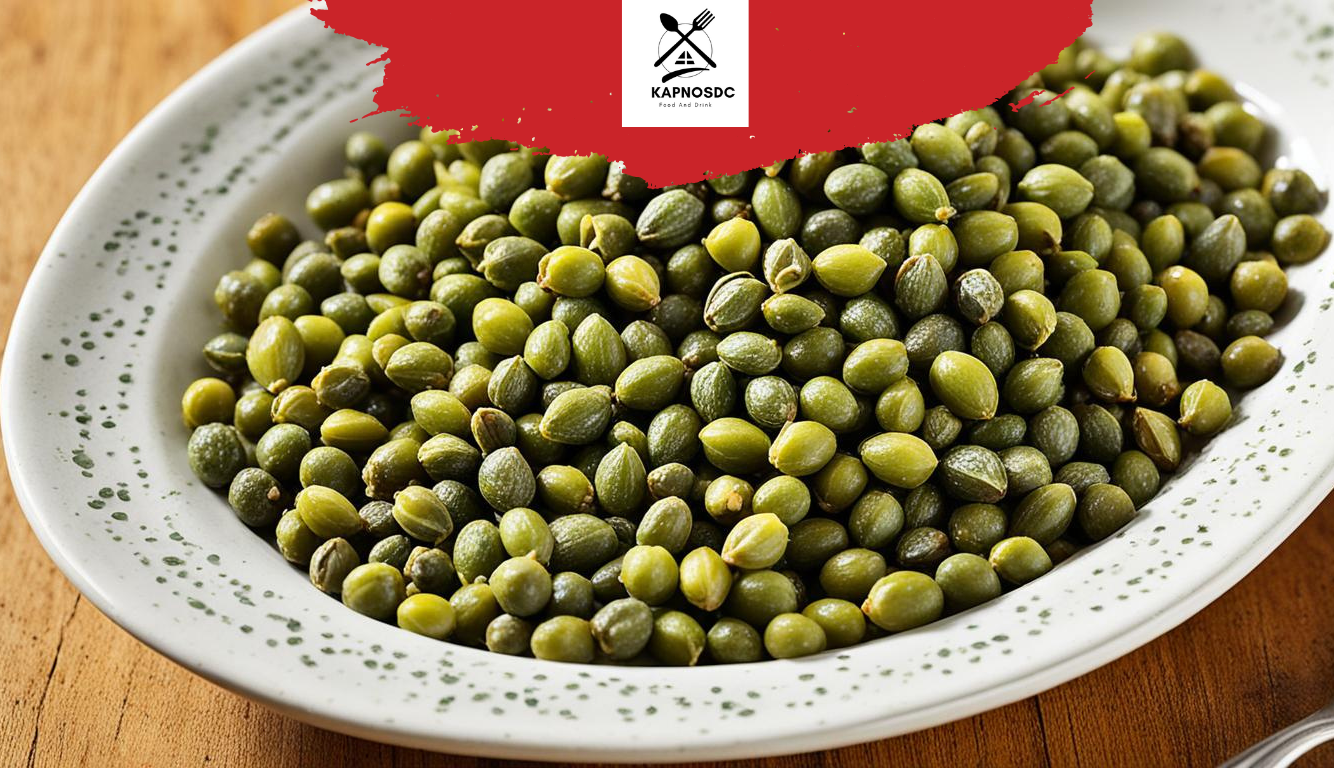
I learned capers are useful in many dishes and good for health. They have antioxidants! I am going to use them in my recipes!
You can grow capers at home with little water. They need lots of sunlight and arid soil.
Capers have a tangy taste. Smaller ones are more flavorful than larger ones.
So capers are from a bush called Capparis spinosa. They come from the Mediterranean area. Can I grow them in the USA?
I didn’t know capers are not small olives. They are different and used in many recipes.
Wow, I never knew capers were so interesting! Thanks for explaining everything in detail. I want to try them in my pasta now!
Great article! I always thought capers were tiny olives. Now I understand their unique taste and how to use them. Can’t wait to add them to my recipes!
Interesting to know capers are not small olives. I always thought they were the same. Thanks for the info on how to cook with them and their health benefits.
I learned something new today about capers. I was curious about their taste and how to include them in recipes. The details about their growing conditions were also helpful.